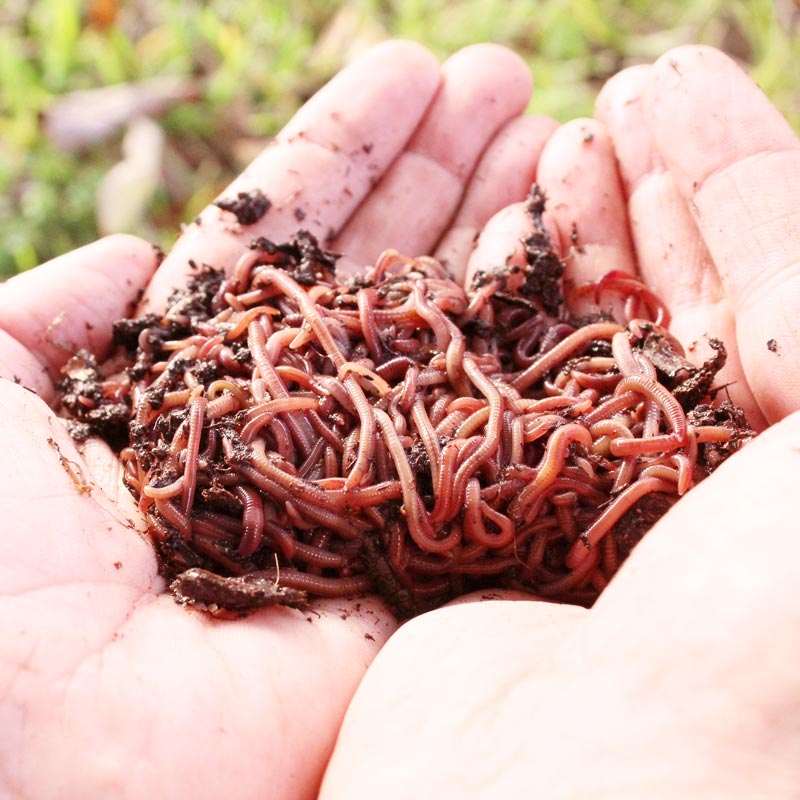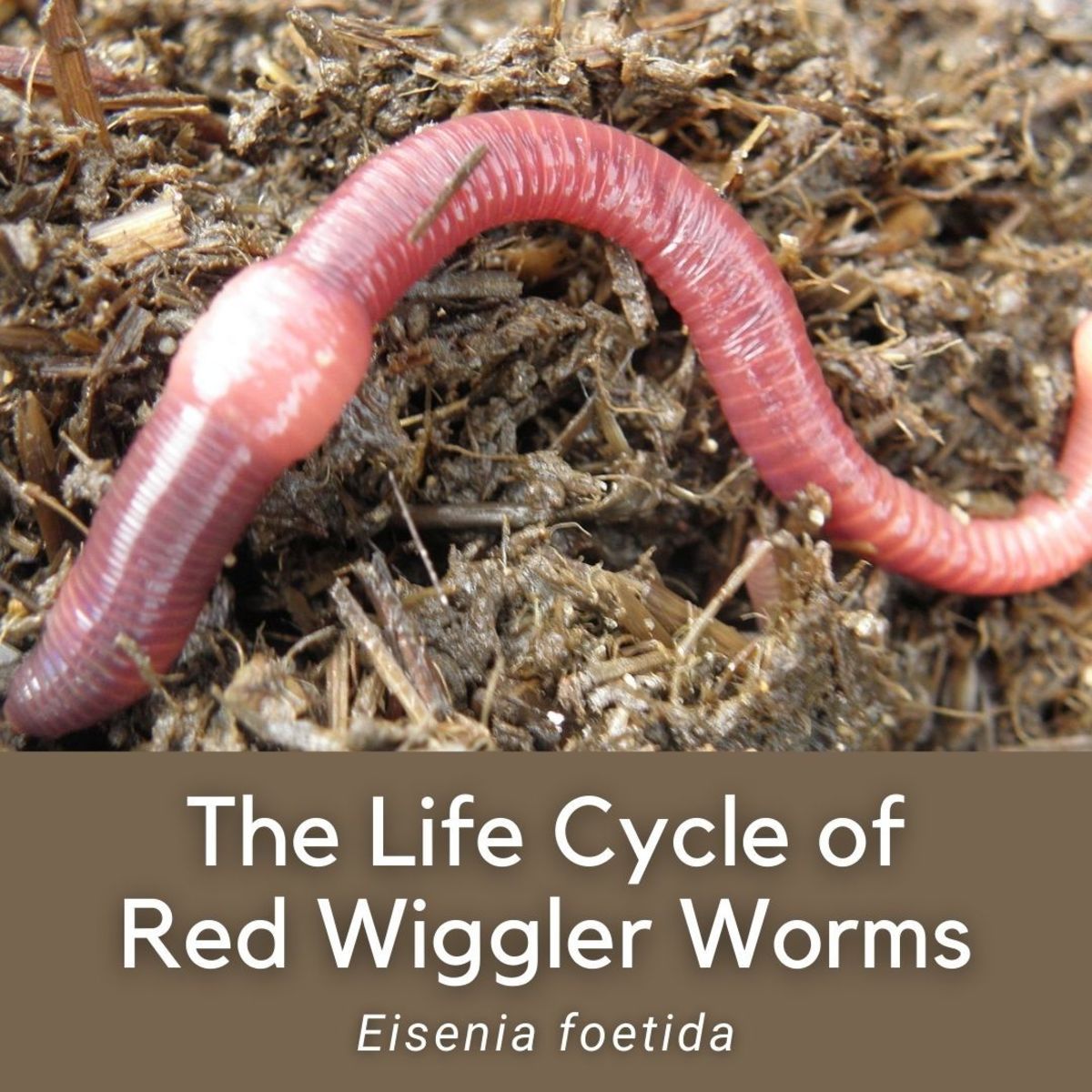Making Best Use Of the Conveniences of Red Wiggler Worms: A Comprehensive Guidebook for Home Gardeners and Urban Farmers
In the realm of lasting horticulture practices, red wiggler worms stand as unsung heroes, silently changing organic waste right into nutrient-rich castings that can function wonders for soil wellness. By exploring the intricacies of exactly how to properly care for and make the most of the advantages of red wiggler worms, individuals can unlock a riches of opportunities for boosting the sustainability and efficiency of their horticulture endeavors.
Comprehending Red Wiggler Worms
Red Wiggler worms, renowned for their efficient composting abilities, are a varieties of earthworms extensively utilized in vermiculture techniques. These worms, medically referred to as Eisenia fetida, grow in decaying natural material, making them perfect candidates for composting (Red Wiggler Worms). Red Wigglers are starved eaters, with the ability of eating their very own weight in organic waste daily. Their digestive system procedure breaks down raw material into nutrient-rich castings, which are a valuable resource for improving dirt and promoting plant growth.
One key feature of Red Wiggler worms is their reproductive rate. These hermaphroditic creatures possess both male and female reproductive body organs, allowing them to replicate rapidly under positive problems. A mature Red Wiggler can create numerous offspring in a short period, making sure a constant population within a composting system.

Setting Up a Worm Container
When developing a worm container for vermiculture objectives, proper prep work and interest to detail are crucial for creating a conducive setting for Red Wiggler worms. Begin by selecting an appropriate container for your worm container.

Place the worm bin in a cool, dark area away from direct sunshine and extreme temperatures. By complying with these steps, you can set up a growing worm bin that will effectively refine natural waste into nutrient-rich vermicompost for your yard.
Feeding and Maintaining Worms
Guaranteeing a nourishing and balanced diet regimen is vital for the health and wellness and performance of Red Wiggler worms in a vermiculture system. Red Wigglers are starved eaters, efficient in eating their very own body weight in natural issue daily. To maintain a flourishing worm populace, it is vital to offer them with a range of food scraps such as vegetables and fruit peels, coffee premises, tea bags, and crushed eggshells. It is vital to prevent feeding them citrus fruits, onions, garlic, dairy products, meat, and oily foods as these can be hazardous to the worms or create undesirable odors in the bin.
Appropriate dampness levels are additionally crucial for the well-being of Red Wiggler worms. The bedding needs to seem like a damp sponge, offering enough dampness for the worms to take a breath through their skin. Frequently check the moisture levels and change by including water or completely dry bed linen product as required. In addition, keeping appropriate temperature level conditions between 55-77 ° F(13-25 ° C )will make sure optimal worm activity and reproduction. By carefully checking their diet plan, moisture, and ecological problems, home gardeners and city farmers can sustain a healthy and productive Red Wiggler worm population for composting purposes.
Harvesting Worm Castings
To effectively extract nutrient-rich worm castings from the vermicompost, a methodical harvesting process is crucial for taking full advantage of the composting advantages. Red Wiggler Worms. The very first step in collecting worm spreadings is to encourage the worms to migrate to one side of the container. This can be attained by placing fresh food Click Here scraps on one side and leaving the opposite side undisturbed for a couple of days. When most of worms have relocated to the side with fresh food, the castings can be accumulated from the contrary side.
After the spreadings have actually been harvested, it is essential to divide any kind of remaining worms from the castings to avoid damaging them throughout storage or application. One efficient method is to develop cone-shaped stacks of castings under bright light. Worms will intuitively relocate away from the light, permitting for very easy splitting up and elimination.
Finally, the collected worm spreadings ought to be kept in a trendy, dark, and completely dry location to preserve their top quality and effectiveness as a nutrient-rich dirt change. By complying with these steps, home garden enthusiasts and urban farmers can optimize the benefits of red wiggler worms in their vermicomposting systems.
Using Worm Castings in Gardening
The consolidation of nutrient-rich worm castings into garden dirt can considerably improve plant growth and overall soil health. Worm spreadings, also called vermicast, are an all-natural plant food created by red wiggler worms as they break down raw material. These spreadings are rich in crucial nutrients like nitrogen, phosphorus, potassium, and beneficial microbes that promote plant growth and boost soil structure.
When utilizing worm spreadings in horticulture, it is necessary to mix them extensively right into the dirt or use them as a top clothing around plants. click here for more info The slow-release nature of worm spreadings guarantees a steady supply of nutrients to plants in time, reducing the threat of nutrient leaching and advertising long-term soil fertility. Furthermore, worm spreadings help enhance dirt oygenation, water retention, and microbial activity, creating a healthy and balanced environment for plant origins to prosper.

Final Thought
Finally, the usage of red this contact form wiggler worms in home horticulture and metropolitan farming can considerably profit soil health and plant growth. By comprehending exactly how to establish up and preserve a worm container, feed the worms properly, and collect their nutrient-rich spreadings, gardeners can optimize the benefits of these earthworms. Incorporating worm spreadings into horticulture techniques can boost soil fertility and general plant productivity. Overall, red wiggler worms use a efficient and sustainable service for improving yard and farm returns.
In the world of lasting gardening methods, red wiggler worms stand as unhonored heroes, quietly transforming organic waste right into nutrient-rich spreadings that can work marvels for soil health.When developing a worm container for vermiculture purposes, appropriate preparation and interest to detail are necessary for developing a conducive atmosphere for Red Wiggler worms. The very first step in gathering worm spreadings is to motivate the worms to move to one side of the bin. Worm castings, additionally recognized as vermicast, are an all-natural fertilizer produced by red wiggler worms as they damage down natural matter. By recognizing how to set up and preserve a worm bin, feed the worms appropriately, and harvest their nutrient-rich spreadings, gardeners can make best use of the benefits of these earthworms.